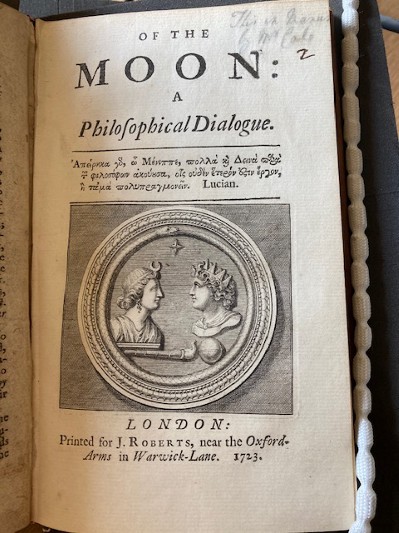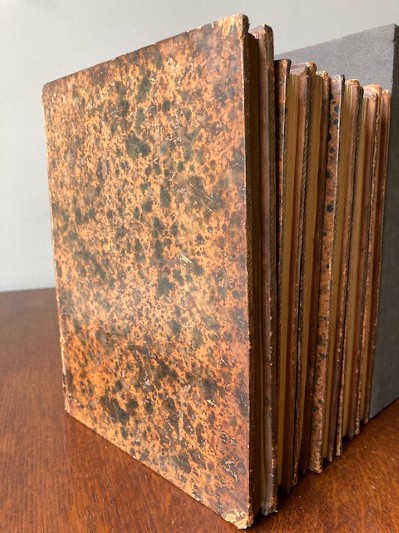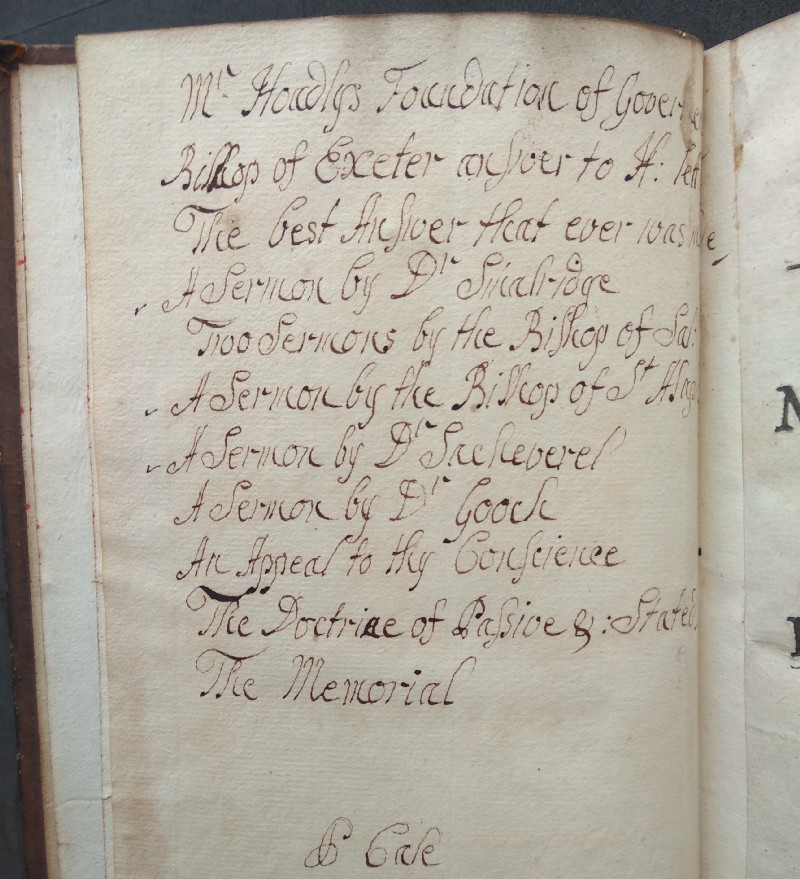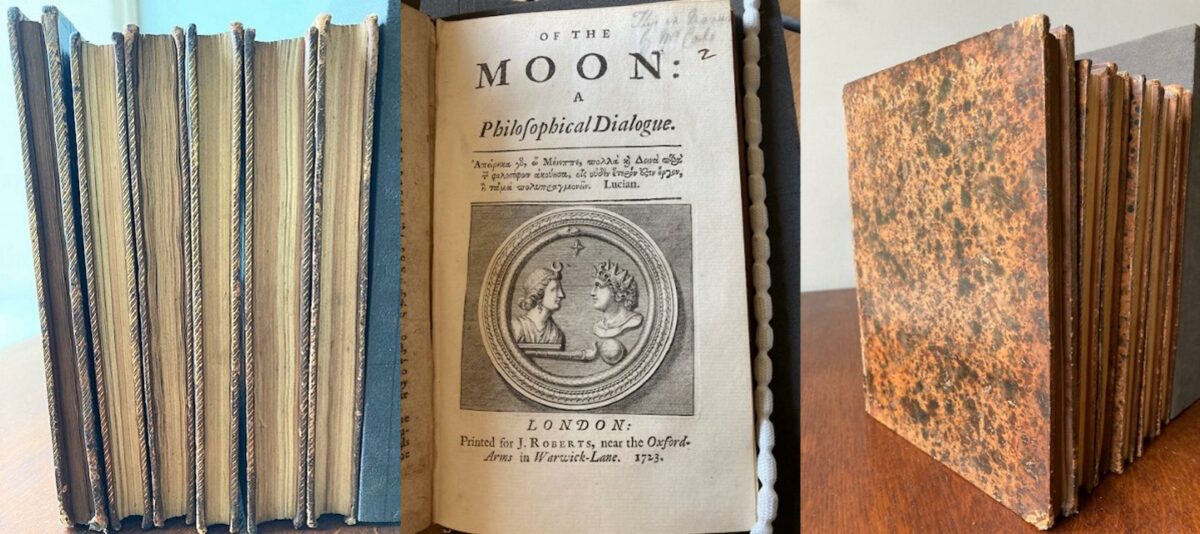Most of the early printed book collection at Hertford is shelved broadly in subject order. This means any discrete collections given by individuals have been separated. Not an issue if their provenance is marked in the books, but this is not always the case.

Books containing a pencilled note “Cale” began to come to light and further research found this to be John Cale, born in Abbot’s Langley in 1722. Cale matriculated at Hart Hall, predecessor of Hertford, in 1739 and three years later was admitted to the Inner Temple where he presumably trained as a barrister. He spent most of his life as a barrister in Barming, Kent.

As I progressed along the shelves, I began to recognise particular bindings as being typical of Cale books. He seems to have favoured a type of calf marbling, and often had gold tooling applied to the board edges. Not all these books have been noted as previously belonging to Cale, and yet they match what I am learning to be his taste in bindings and subject matter. His books, in terms of subject, seem to cover quite a range of topics, from the usual theology and law you might expect in a provincial gentleman’s collection but with a definite interest in the practical, particularly gardening and horticulture.

Another interesting aspect to Cale’s library is that it contains a several books which belonged to a Phebe Cale. This is probably his aunt, who married mathematician Charles Hayes in 1713; the books have her maiden name so must have been owned before she married. There are also several books by Hayes himself in the collection, for example his Treatise of fluxions published in 1704, the first work printed in English to explain Newton’s method of fluxions, and his Of the moon: a philosophical dialogue.

In his will of 1777, Cale bequeathed his books and manuscripts to the college and left detailed instructions for the delivery of the books to Hertford, for the appointment of a librarian, and for a catalogue to be made, as well as provision for their general care and upkeep. Unfortunately, records of the college (and certainly for the library) have not survived in any significant amount for this period so we don’t know whether these plans were ever put in place. As the cataloguing of Hertford’s rare books progresses, we are gradually discovering more of Cale’s books. Each new volume brings more insight into Cale’s varied interests and makes his collections, which include some rare items, visible for researchers to locate in SOLO.

